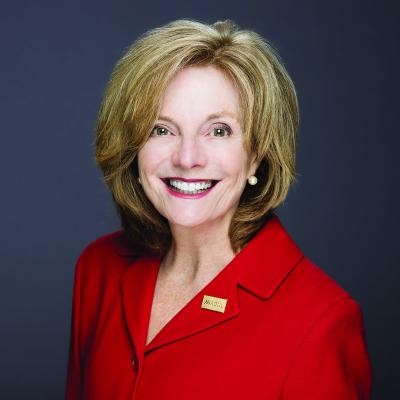
Voice of the President | May 2024

In the weeks following the AONL conference in New Orleans, I have been inspired by the collective wisdom and visionary leadership of nursing leaders. Among those leaders are the 2024 AONL and AONL Foundation award recipients featured in this issue. Their work is making significant strides in improving professional practice, furthering nursing research and advancing diversity.
It is important that we continue to share our successes and the challenges we encounter with one another. By working collaboratively, we have the power to forge a health care system that is not just more effective and efficient, but one that is also compassionate and caring. The impact we can make on patient care and the broader health care landscape is profound.
The conference presentation from researcher Peter Buerhaus provided us with much-needed optimism. His recent study, reflecting on the resurgence of the health care workforce to near pre-pandemic levels, underscores a timely opportunity for nursing to embrace its leadership potential.
Throughout the conference, attendees heard about emerging care models demonstrating great promise. This topic is an important one to AONL. The organization is compiling a Care Model Inventory that will be on the AONL website later this year. One innovative example is the co-caring model implemented at Providence Health, as discussed in a 2023 Nursing Administration Quarterly article by AONL board member Sylvain Trepanier and co-authors. This model has boosted both nurse and patient engagement scores while delivering positive clinical outcomes. In a remarkably short amount of time, Providence has observed decreases in patient length of stay, vacancy rates, turnover rates, and costs per discharge — yielding significant returns on investment.
Likewise, Ochsner Medical Center’s pioneering efforts in alternative care models since 2017 are commendable. This issue features insights from Ruth Sagastume and Rachelle Longo on how their model has led to notable decreases in patient falls and sepsis rates, improvements in stroke care and patient flow, and a boost in teamwork and nurse engagement.
Team-based care models are also becoming prominent in care redesign. Maribeth McLaughlin examines how at UPMC, this approach ensures clinicians work to their fullest potential. It also opens career advancement opportunities for patient care technicians and licensed practical nurses, paving the way for them to become RNs.
The threads connecting these success stories are clear: effective communication between leadership and front-line staff, leadership visibility and feedback solicitation, and a shared belief in the meaningful purpose of our work, founded on trust.
The nurse-led initiatives showcased here are not just theories but are yielding tangible benefits. Results show improved clinical outcomes, enhanced access to care, patient-centered approaches and, importantly, a rekindling of the joy in nursing. We are ideally positioned to take a central role in defining and delivering health care that is safe, timely, effective, efficient, equitable and centered on patients’ needs. With the insights and encouragement from the conference still fresh in our minds, let’s seize this moment to lead innovations in national health policy and practice. This is our call to action.
We are ideally positioned to take a central role in defining and delivering health care that is safe, timely, effective, efficient, equitable and centered on patients’ needs.

